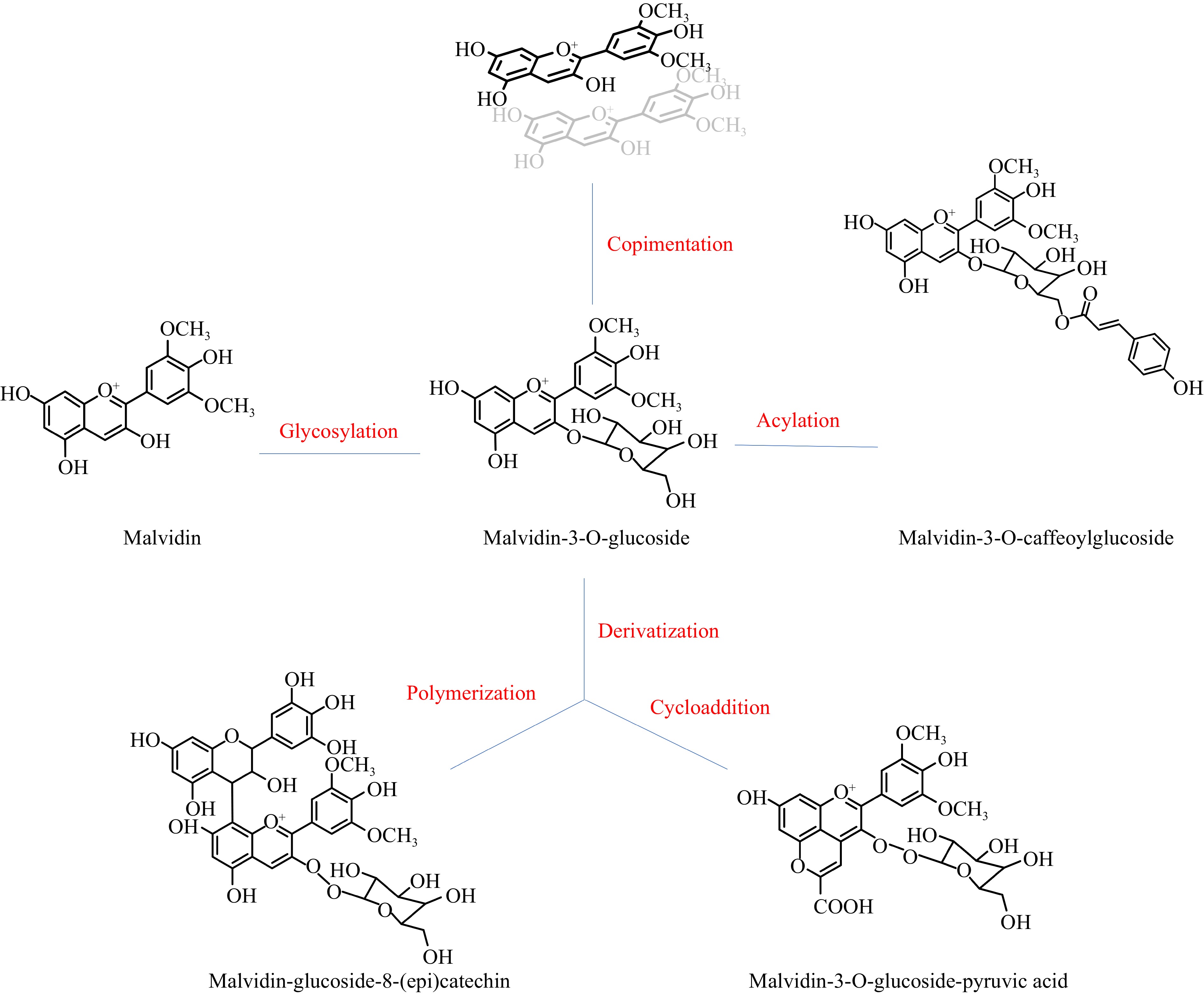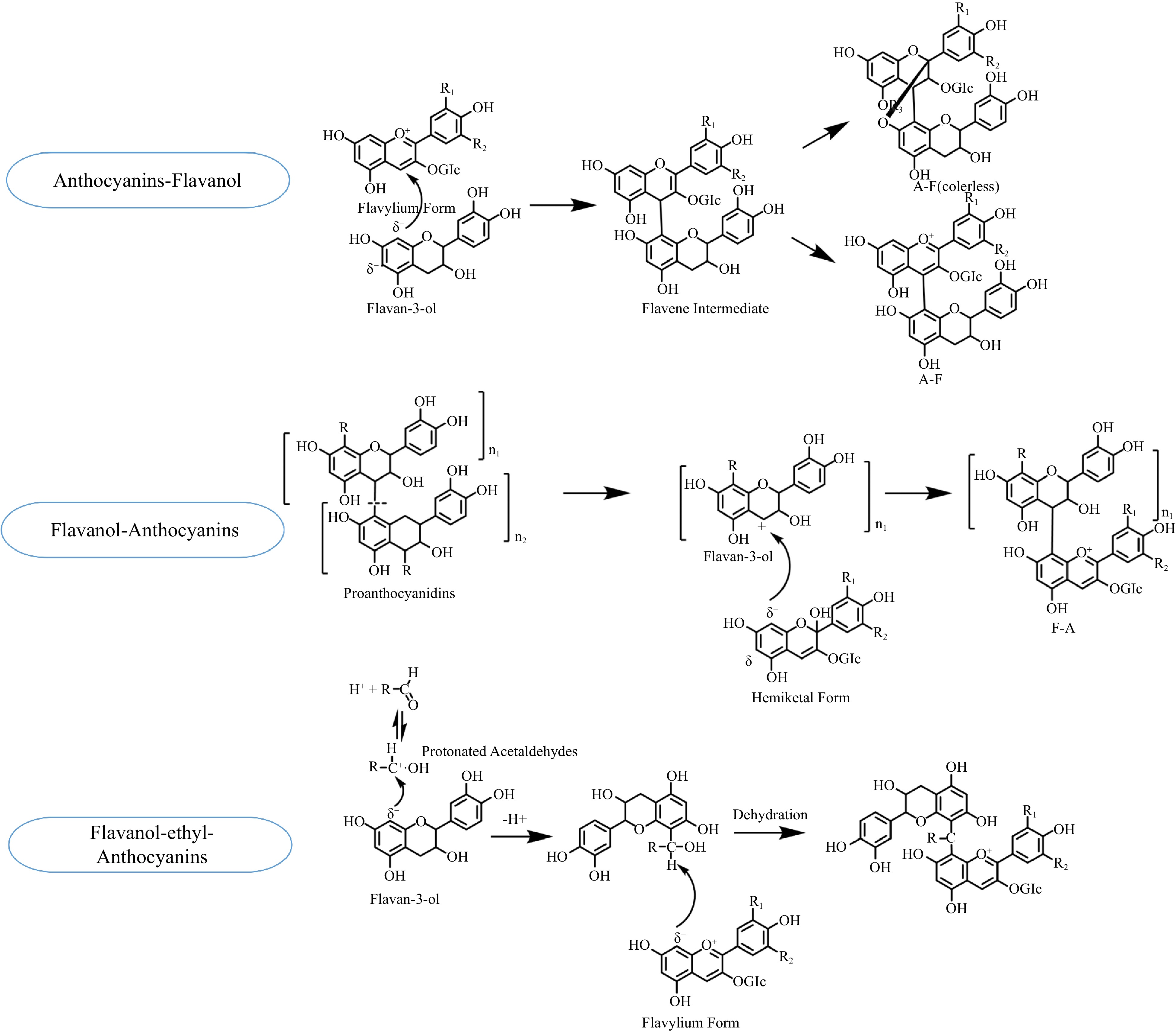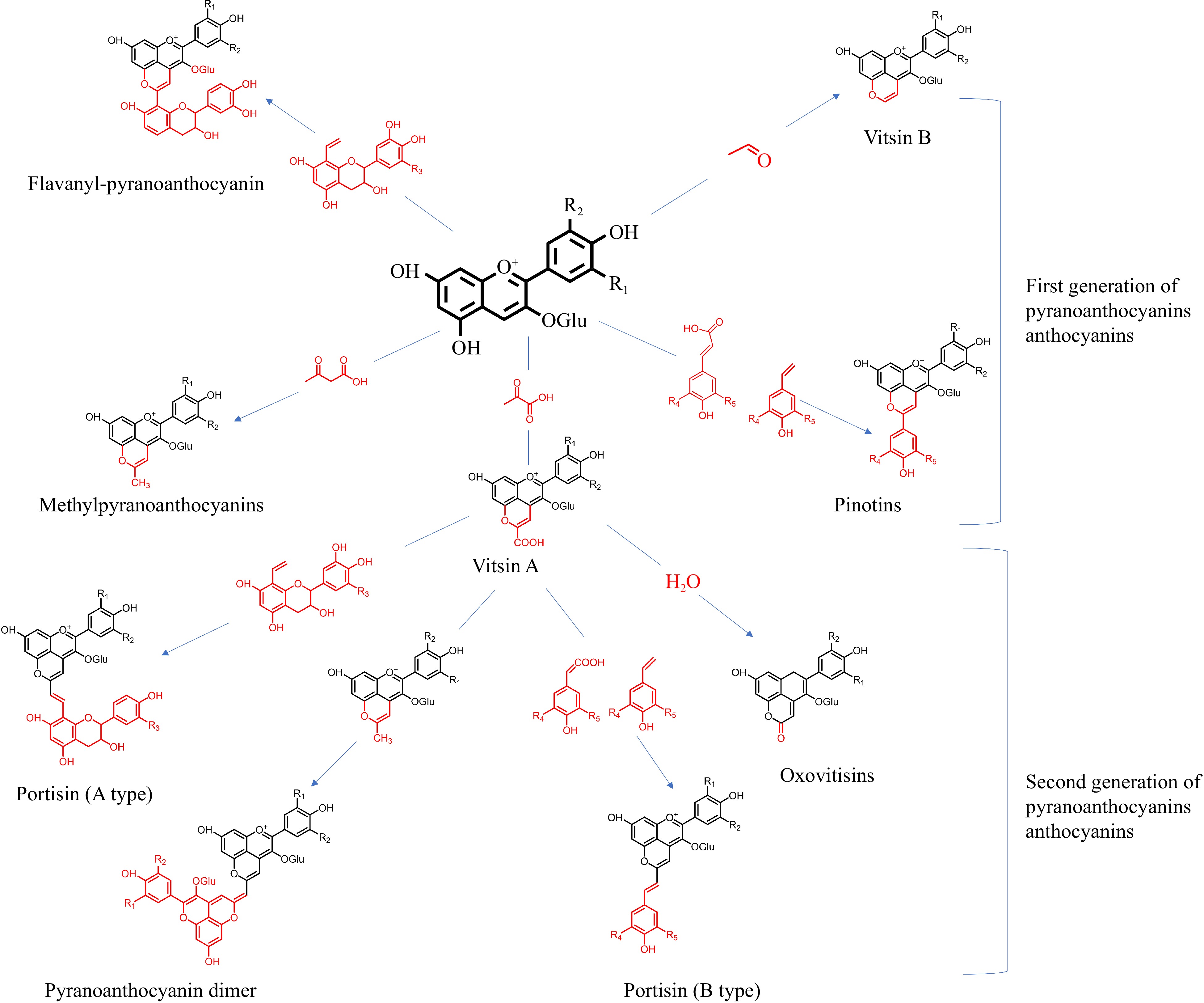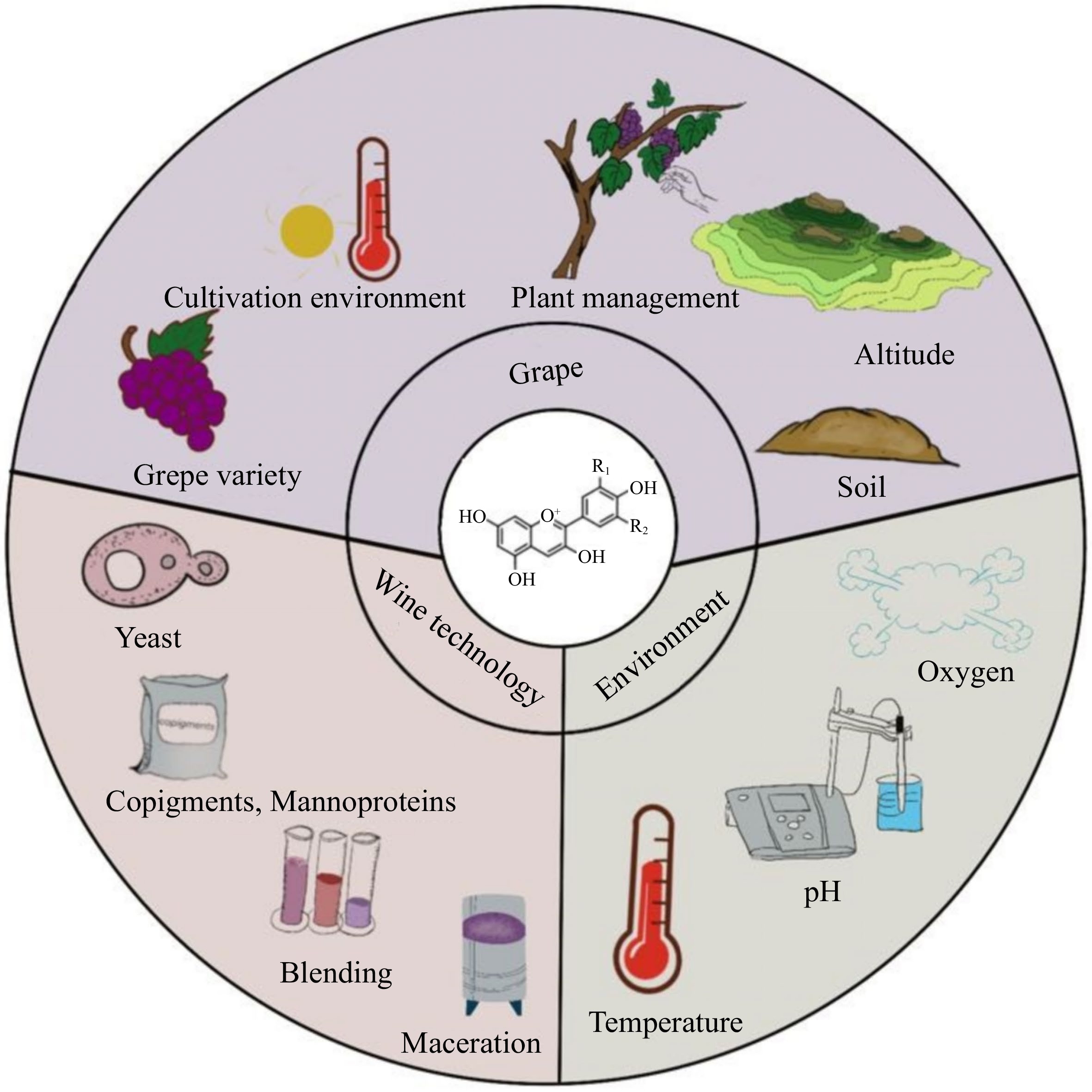-

Figure 1.
The core structures of anthocyanidins and common forms in wine.
-

Figure 2.
Reactions involving anthocyanins in wine.
-

Figure 3.
The process of anthocyanins degradation via ring opening.
-

-

Figure 5.
Process of pyranoanthocyanins formation.
-

Figure 6.
Factors impacting the anthocyanin content and stability of wine.
-

Figure 7.
Structural forms of anthocyanins in acidic solutions.
-
Species Methods Outcomes Reference Cultivation environment Grapes Cabernet Sauvignon Spike thinning Total and acylated anthocyanins increased. [95] Frontenac, Marquette, and Petite Pearl Pruning The percentage of polymeric color increased by rising berry temperature and photosynthetically active radiation. [56] Nebbiolo Leaf removal The 3′-hydroxylated anthocyanin decreased and the 3′,5′-hydroxylated anthocyanin increased. [96] Cabernet Sauvignon and Merlot High altitude Total tannins increased. [57] Cabernet Sauvignon Deficiency irrigation Gene expression levels in the anthocyanin biosynthetic upregulated and the proportion of Malvidin-3-O-glucosides increased. [60] Maceration Grapes Primitivo Stems addition The rate of polymeric anthocyanins increased, resulting in greater color stability. [62] Cabernet Sauvignon and Nebbiolo Exogenous enzymes addition Extract more anthocyanins from skins and reduce the anthocyanins degradation. [63] Copigmentation Grapes Syrah Overripe grape seeds addition Increased chromatic stability, improved chroma values and bluish hues [70] Syrah American barrel wastes Wine color chromatically more stable [67] Merlot Phenolic extracts addition Color loss reduction in 3 months [68] Mannoproteins additionn The color stability and antioxidant capacity improved [97] Yeast Yeast Metschnikowia pulcherrima, Zygosaccharomyces bailii, Candida zeylanoides, and Torulaspora delbrueckii Mixed inoculation with S. cerevisiae Pyruvate and acetaldehyde content increase, promoting polymeric anthocyanins formation. [46,73] Pichia guilliermondii, S. pombe, and Wickerhamomyces anomalus Mixed inoculation with S. cerevisiae Hydroxycinnamic acid decarboxylase increased, resulting in more pyranoanthocyanins synthesis. [75] Wine Blending wine Outcomes Blending Cabernet Franc, Cabernet Sauvignon Marselan and Petit Verdot a* and red hue increased; b* and yellow hue decreased. [76] Aging time Methods Outcomes Micro-oxygen 3~6 months Barrel aging and tank aging with micro-oxygen Monomeric anthocyanins decreased and vitisin-related anthocyanins increased. Oak matured wine showed a more stable color after six months botting aging, [82] 12 months Barrel aging Wine aging in lower oxygen permeability barrel receives more polymeric anthocyanins. [80] 15 d Tank aging with adding wood chips and blocks Monomeric anthocyanins decreased 4%−14%, polymeric anthocyanins increased 7%−21%. [84] Temperature Method Outcomes Temperature 20 °C Bottle aging at 20 °C Synthesize more polymeric anthocyanins than wine aging at 15 °C. [91] 20−27 °C Bottle aging at 20−27 °C Synthesize more pinotin than wine aging at 15−17 °C. [92] Table 1.
Examples used in improvement of anthocyanin stability.
Figures
(7)
Tables
(1)